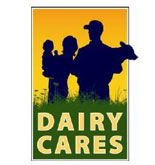
The California sun is playing an increasingly important role in how dairy families manage their energy costs and expand sustainability efforts. Investing in solar panels allows dairy farms to offset their electricity needs, while helping the state meet its renewable energy goals and climate policies. Solar arrays nestled into California’s dairy landscape—especially in the Central Valley—are creating an impressive amount of clean energy.
More than 100 dairy farms across the state are using solar energy panels, with a total energy capacity of more than 77 megawatts (MW). Many of these dairy farms have a solar energy capacity of 1 MW or more. A single system of this size offsets the emissions of 297 passenger vehicles driven for one year. In total, the solar energy systems on California dairies are offsetting the greenhouse gas equivalent of more than 12 million gallons of gasoline consumed or more than 126 million pounds of coal.

“Solar energy is a win-win for dairy families and for California,” said Alicia Kilgore, manager of agriculture and food processing for Pacific Gas and Electric Company. "Through investing in renewable energy projects, dairies in the Central Valley are helping the state meet its clean energy goals—committing to solar energy at a rate unmatched by other industries."
Driving improvement in air quality
The expansion of solar energy technology also helps to improve air quality by reducing dependence on fossil fuels and reducing emissions of criteria pollutants, such as nitrous oxides and particulate matter. Challenge Dairy Products, Inc. is working with the San Joaquin Valley Air Pollution Control District to test a solar-powered, zero-emissions commercial Transport Refrigeration Unit, powered through a new technology called Rayfridgeration. The truck stores and refrigerates dairy products on delivery routes, using roof-mounted solar panels in the day time and an auxiliary battery that is charged at night. As a back-up, the electrical system is also capable of charging the battery while the vehicle is running. Challenge Dairy has been testing the Rayfridgeration truck since April 2017, and it is exceeding expectations so far. As compared to a conventional refrigerated delivery truck, the Rayfridgeration truck has reduced nitrous oxide emissions by 98%, carbon dioxide emissions by 86%, and particulate matter emissions by 97%.
Through implementation of solar energy technology, California dairy families are expanding their efforts to help the state meet its clean energy goals, while improving air quality, and reducing greenhouse gases.


